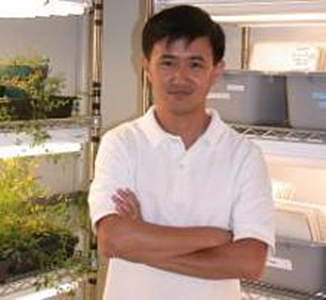
His goal is to understand the interaction between multicellular hosts and their microbial partners, with a focus on symbiotic associations.Focus:Mechanisms of intracellular symbiosis between eukaryotic legume hosts and nitrogen-fixing bacteria He aim to illuminate the molecular basis of highly evolved and intimate forms of symbiosis. His system is the association between legume plants and nitrogen-fixing bacteria. The two species undergo a complex series of developmental changes, resulting in a specialized symbiotic organ, the root nodule. Within the nodule, bacteria are transformed into intracellular organelles – called symbiosomes – dedicated to converting (fixing) molecular nitrogen into ammonia for the host plant. Because fixed nitrogen is frequently the scarcest soil nutrient for plants, this symbiosis has significant economic and ecological impacts: legume crops provide a large portion of the protein in the human diet without nitrogen fertilizers. Globally, biologically fixed nitrogen constitutes a major component of the nitrogen cycle.















